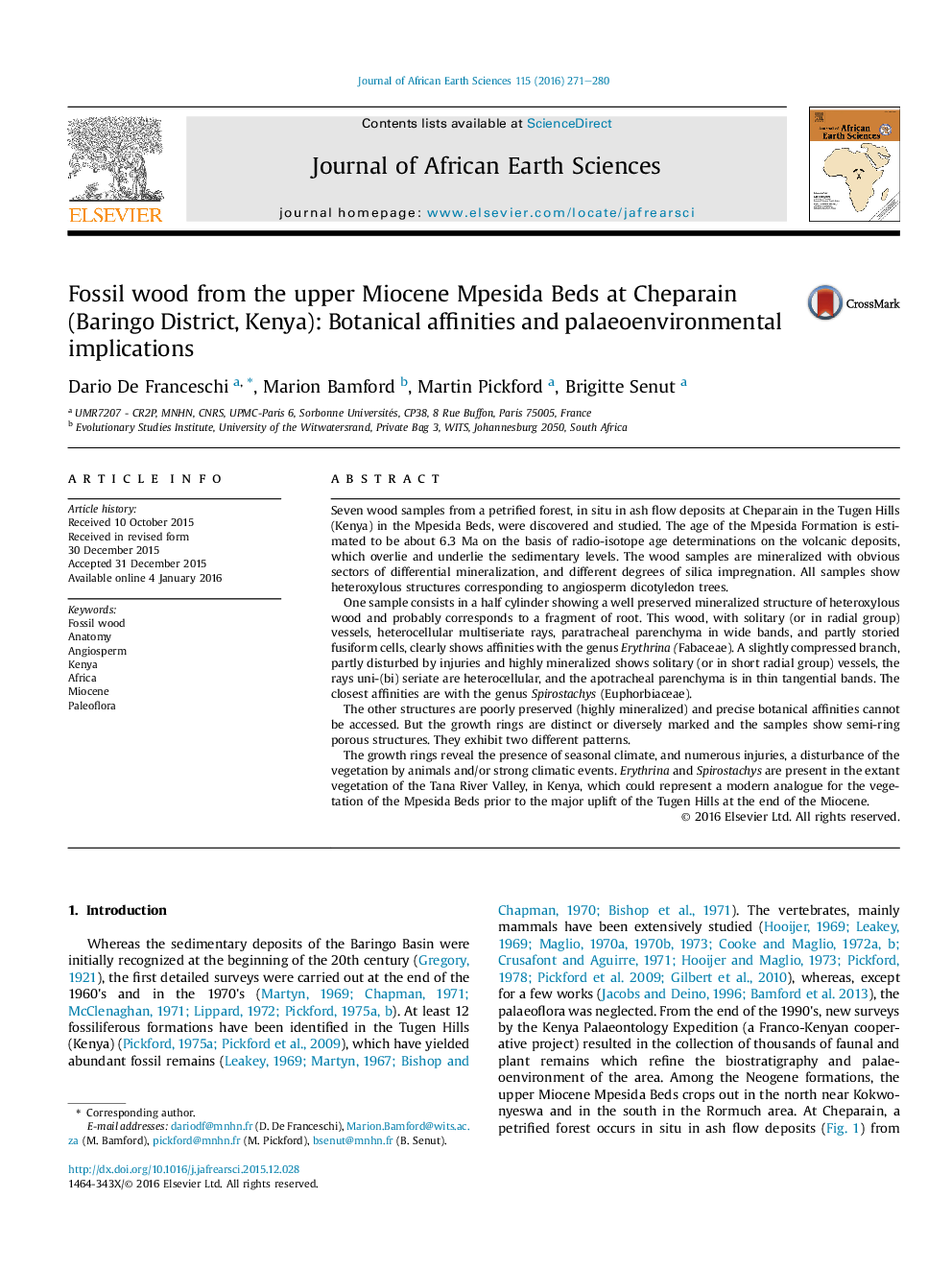| کد مقاله | کد نشریه | سال انتشار | مقاله انگلیسی | نسخه تمام متن |
|---|---|---|---|---|
| 4728414 | 1640193 | 2016 | 10 صفحه PDF | دانلود رایگان |

• We discovered fossil wood in place in the Upper Miocene layers in Kenya.
• We studied anatomically the fossil wood and identified them partly.
• The cambial activity of all the fossil wood reveals a past seasonal climate.
• The discovered palaeoflora is potentially close to the extant flora found in the Tana River valley in Eastern Kenya.
• The present environment of the Tugen Hills is cooler than the paleoenvironment of the fossil site due to the Hills uplift.
Seven wood samples from a petrified forest, in situ in ash flow deposits at Cheparain in the Tugen Hills (Kenya) in the Mpesida Beds, were discovered and studied. The age of the Mpesida Formation is estimated to be about 6.3 Ma on the basis of radio-isotope age determinations on the volcanic deposits, which overlie and underlie the sedimentary levels. The wood samples are mineralized with obvious sectors of differential mineralization, and different degrees of silica impregnation. All samples show heteroxylous structures corresponding to angiosperm dicotyledon trees.One sample consists in a half cylinder showing a well preserved mineralized structure of heteroxylous wood and probably corresponds to a fragment of root. This wood, with solitary (or in radial group) vessels, heterocellular multiseriate rays, paratracheal parenchyma in wide bands, and partly storied fusiform cells, clearly shows affinities with the genus Erythrina (Fabaceae). A slightly compressed branch, partly disturbed by injuries and highly mineralized shows solitary (or in short radial group) vessels, the rays uni-(bi) seriate are heterocellular, and the apotracheal parenchyma is in thin tangential bands. The closest affinities are with the genus Spirostachys (Euphorbiaceae).The other structures are poorly preserved (highly mineralized) and precise botanical affinities cannot be accessed. But the growth rings are distinct or diversely marked and the samples show semi-ring porous structures. They exhibit two different patterns.The growth rings reveal the presence of seasonal climate, and numerous injuries, a disturbance of the vegetation by animals and/or strong climatic events. Erythrina and Spirostachys are present in the extant vegetation of the Tana River Valley, in Kenya, which could represent a modern analogue for the vegetation of the Mpesida Beds prior to the major uplift of the Tugen Hills at the end of the Miocene.
Journal: Journal of African Earth Sciences - Volume 115, March 2016, Pages 271–280